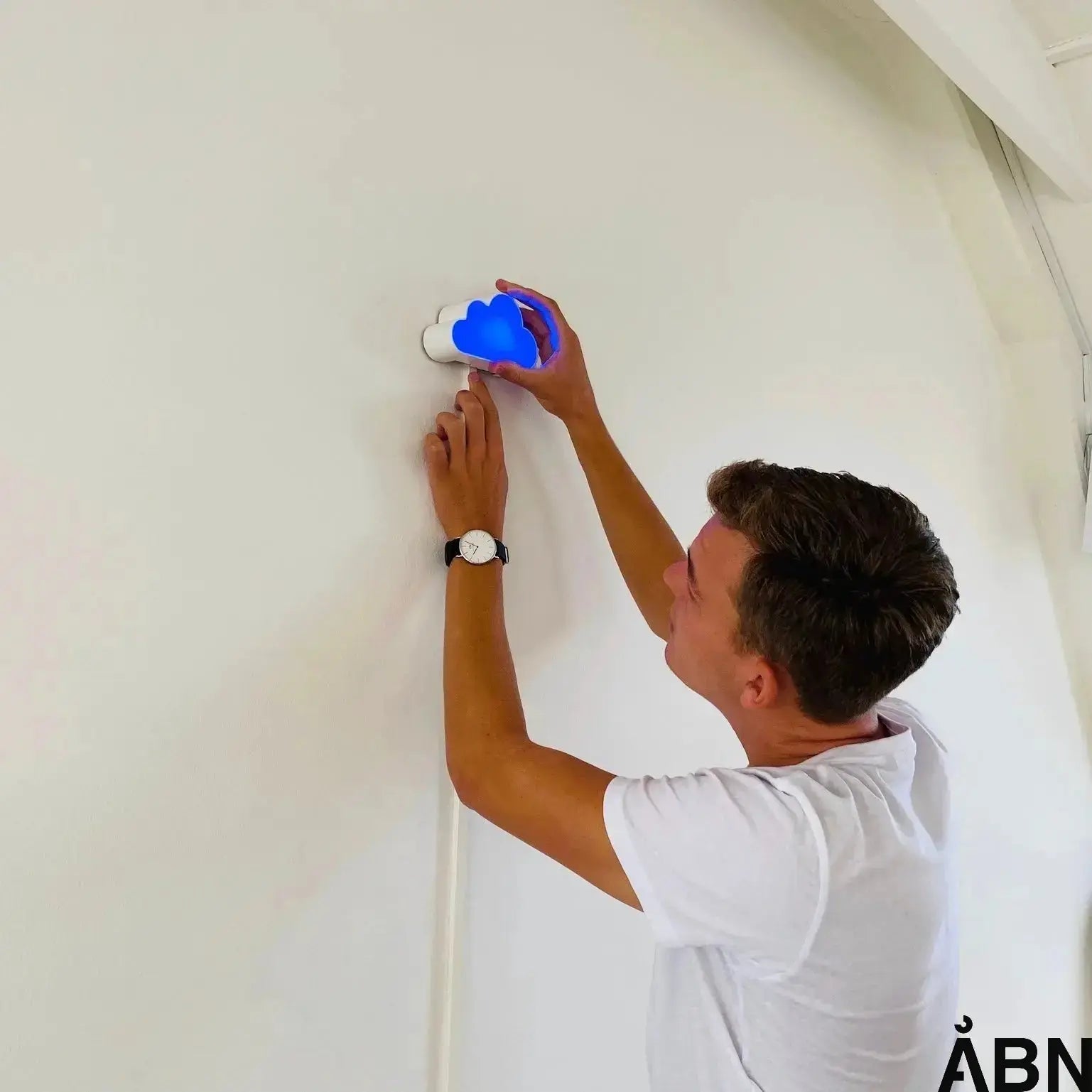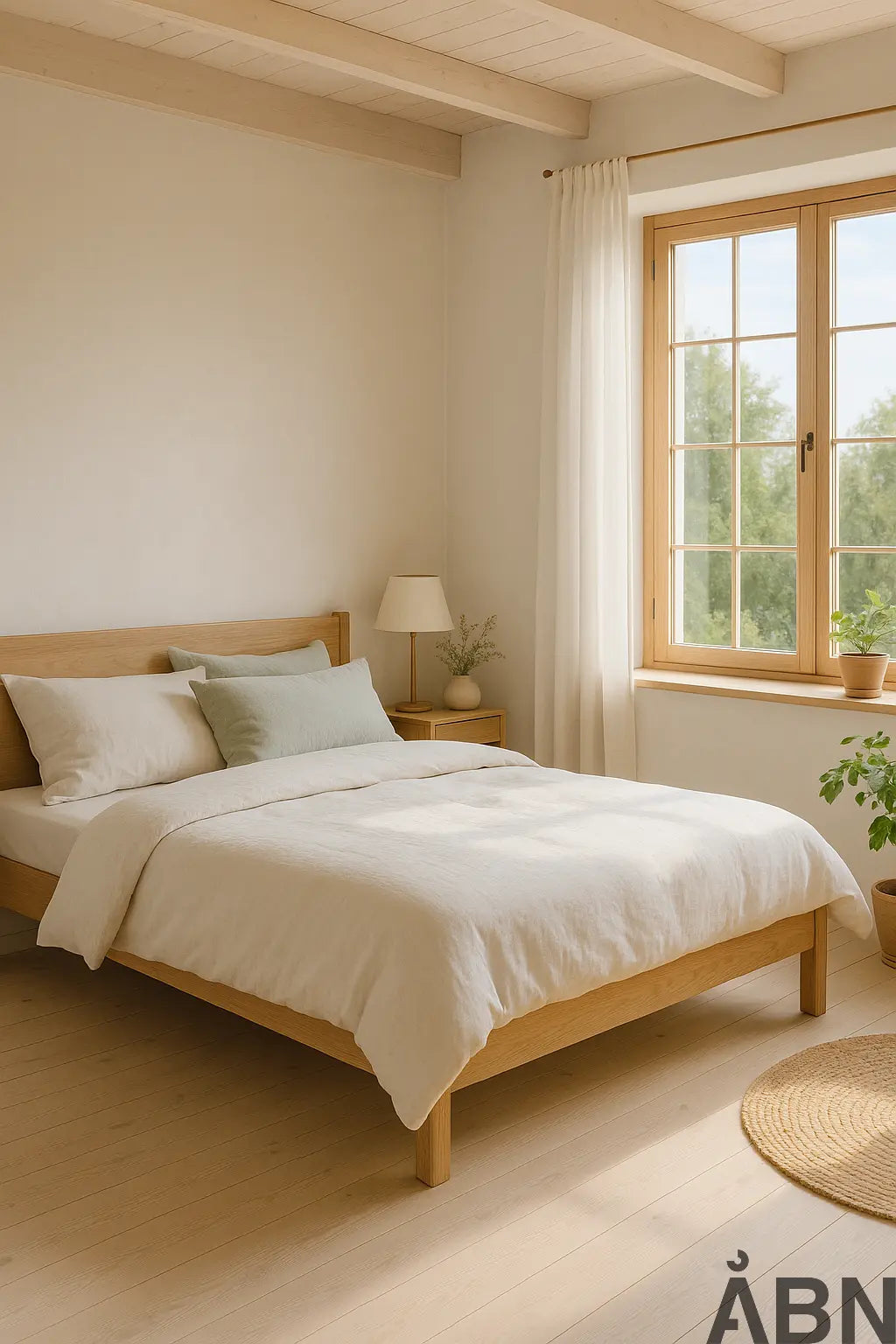This temperature is best in your bedroom
Imagine a bedroom where the duvet feels like a cloud, the air is clear and fresh, and your body slips peacefully into a deep sleep. It’s not just a dream – it’s the result of the right indoor climate. And the key? The right temperature in the bedroom.
Bedroom temperature plays a crucial role in your sleep quality, your health and your daily well-being. Whether you are a leader in a public institution, a facility manager in a company or a parent focused on the well-being of your family, it is important to understand how to create the best conditions for a good night's sleep - both for yourself and those you are responsible for.
Why is bedroom temperature so important?
Our body temperature naturally drops when we sleep. It is part of the biological circadian rhythm and an important part of the architecture of sleep. If the environment is too hot or cold, this process is disrupted, which can lead to restless sleep, frequent awakenings and lower sleep quality.
According to research , it is recommended that the temperature in the bedroom is between 15 and 22 degrees Celsius. Within this range, the body finds it easiest to regulate itself and fall asleep. For most Danes, 18–19 degrees will be the optimal temperature.
Danes' bedrooms: How hot is it really?
A study from the Bolius Knowledge Center shows that Danes have an average bedroom temperature of 18.7 degrees during the winter months. This is a temperature that is close to the recommended level and shows a growing awareness of the importance of a good sleeping climate – especially in the wake of the energy crisis, when many turned down the heat.
How to find the right temperature in your bedroom
While 18 degrees may be ideal for many, it's important to remember that the optimal level can vary depending on age, health, and individual preferences. Children and the elderly may need slightly higher temperatures, while others sleep best in a cooler environment.
Here are some practical strategies for finding and maintaining the best temperature in your bedroom:
1. Adjust the thermostat at night
Our body temperature naturally drops in the evening. Turning down the heat in your bedroom supports this process. It can be as simple as lowering the temperature by 1–2 degrees at night.
2. Use cooling and breathable bedding
Bedding made from natural materials like cotton or bamboo helps regulate temperature and wick moisture away from the body, creating a more comfortable sleeping environment – especially during hot periods.
3. Ensure adequate humidity
A good indoor climate is not just about temperature. The humidity should be around 40–60%. If the air is too dry, it can cause irritation in the respiratory tract. If it is too humid, it can lead to mold and discomfort. You may want to use a humidifier or dehumidifier to adjust the level.
4. Darkening and ventilation
Blackout curtains can help keep the room cool and dark – especially in the summer when the sun rises early. Combine with good ventilation, for example by opening the window briefly before bedtime.
5. Technology that provides insight into your indoor climate
If you want to understand and optimize the indoor climate in your bedroom, you can benefit from using technology that visualizes temperature, humidity and CO₂ levels. At ÅBN , we have developed intuitive sensors and dashboards that make it easy to monitor the indoor climate – almost like a weather forecast for your home or workplace. This gives you the opportunity to act on data and create a healthier sleeping environment.
What does temperature mean for children and adolescents?
Children are particularly sensitive to heat and cold, as their ability to regulate body temperature is not fully developed. A bedroom that is too warm can lead to restless sleep and an increased risk of nighttime awakenings. For schools and institutions where children's well-being is in focus, it is therefore important to ensure good sleeping and resting environments with the right temperature.
ÅBN's solutions make it possible to monitor and improve the indoor climate in kindergartens, schools and after-school programs – which not only promotes sleep and rest, but also concentration and learning during the day. Read more about our approach to indoor climate in schools and institutions .
Temperature, sleep and sustainability – an important connection
Good sleep is not just about well-being – it’s also about sustainability. Adjusting the heating to achieve the optimal sleeping temperature not only has a positive effect on health, but also on energy consumption. A reduction of just one degree can reduce heating consumption by up to 5%.
For companies and public institutions working with ESG goals and sustainability, it is therefore obvious to think about indoor climate and energy management together. With ÅBN's sensors and data visualization, you can document and manage the indoor climate - and at the same time promote well-being and job satisfaction.
How do I know if the temperature in my bedroom is optimal?
A good place to start is to measure the temperature with an accurate thermometer – preferably one that also shows humidity. But even better is to get a comprehensive overview of the entire indoor climate. This allows you to react proactively, adjust the heating, air out or optimize ventilation.
At ÅBN, we work to make the indoor climate visible and understandable. Our solutions are developed for both private homes, institutions and businesses, and they help you make data-driven decisions about temperature, air quality and energy consumption. See more in our technical documentation .
Conclusion: The right temperature is the key to good sleep
Bedroom temperature is not just a matter of comfort – it is an important factor for health, sleep quality and well-being. By finding the right balance between heat, humidity and ventilation, you can create an environment that promotes deep and restorative sleep.
Whether you’re responsible for an office environment, a school, or your own home, it’s worth taking temperature seriously. And remember: You don’t have to guess. With the right tools and data, you can make smart decisions – for yourself and those you care about.
Do you need sparring, data or technological solutions to improve the indoor climate? Contact ÅBN – we are ready to help.
FAQ: Bedroom temperature
What is the ideal temperature in the bedroom?
For most adults, the ideal temperature is between 15 and 22 degrees Celsius. Many people sleep best at around 18 degrees, but it can









